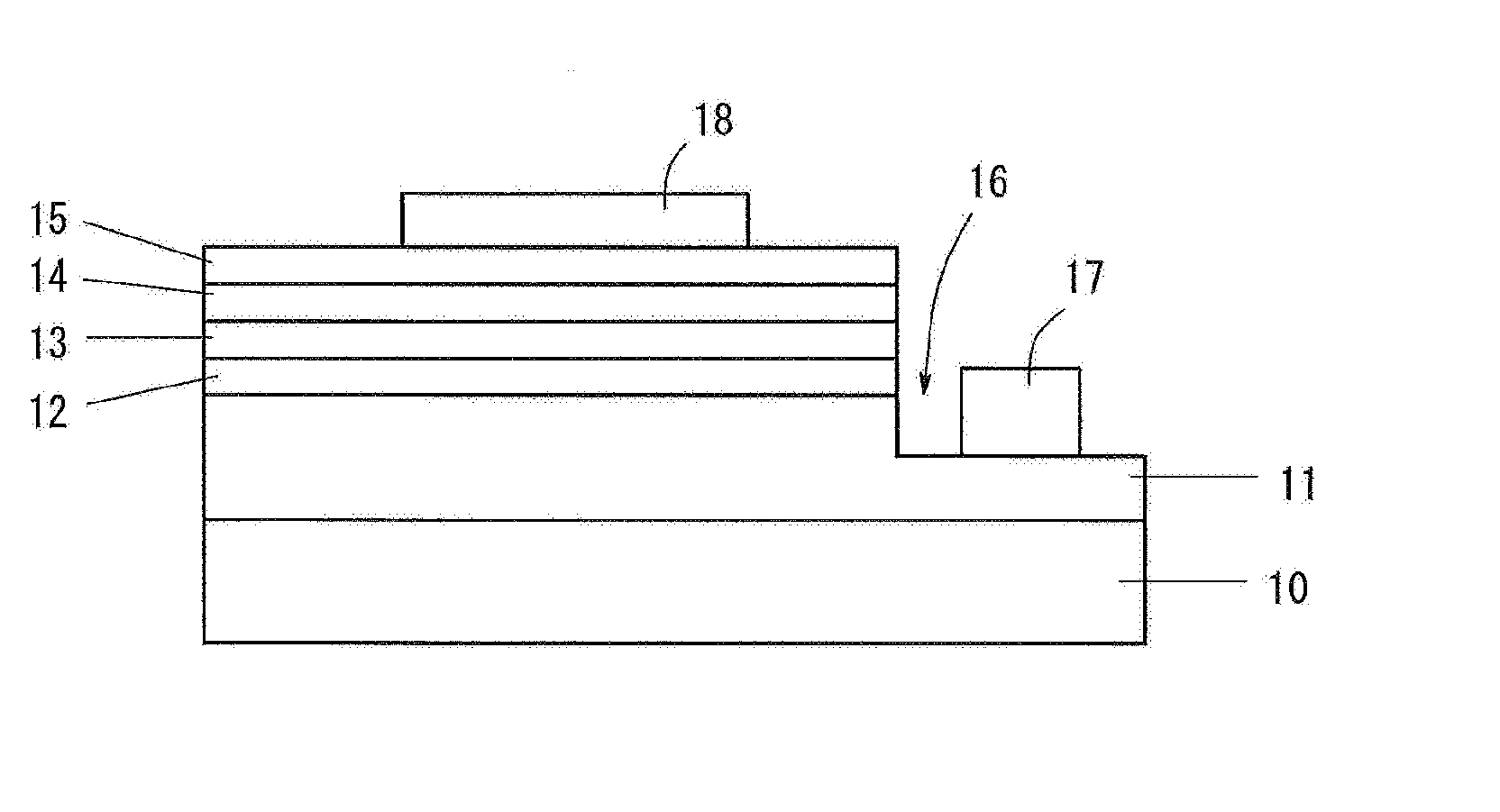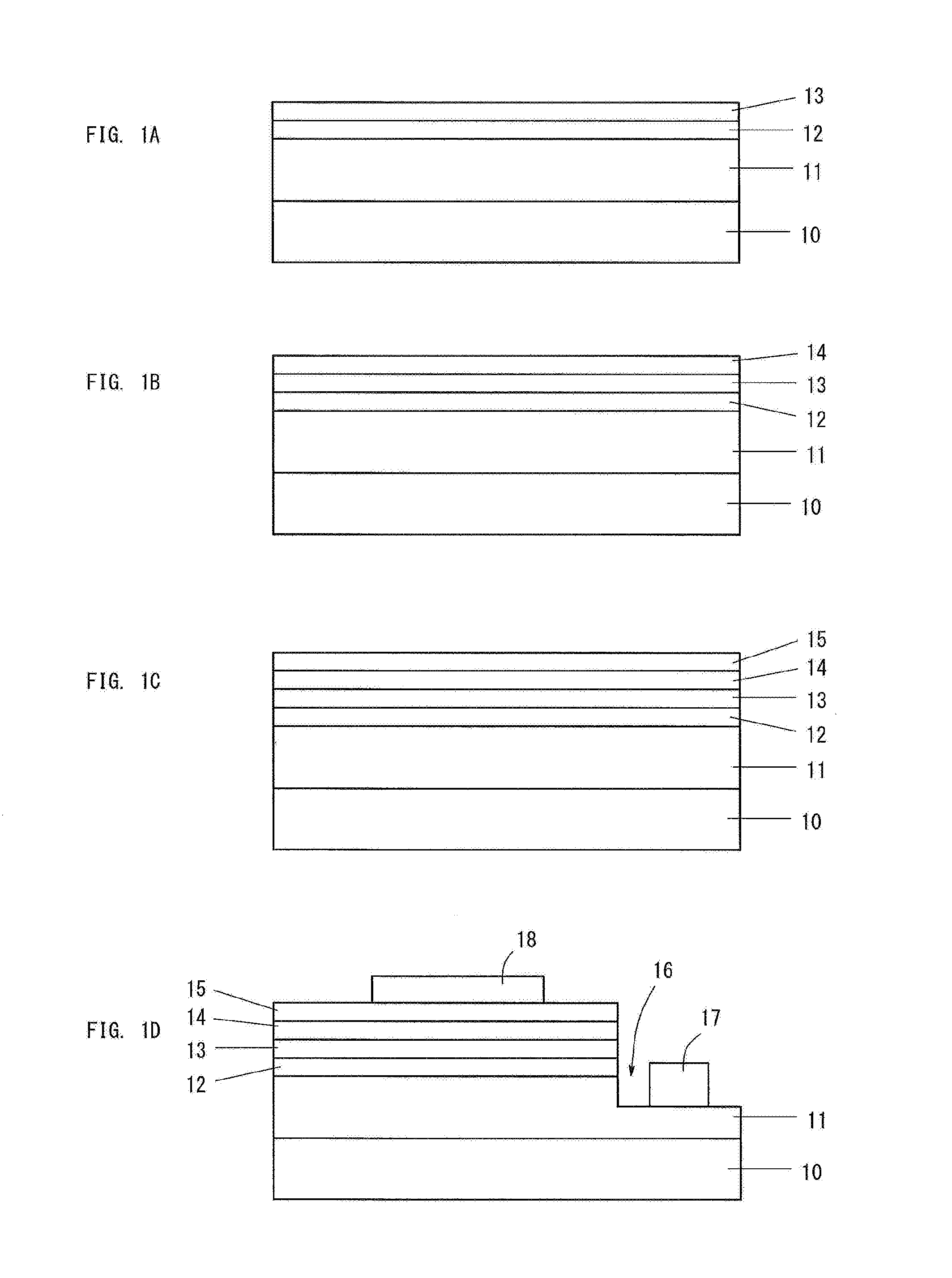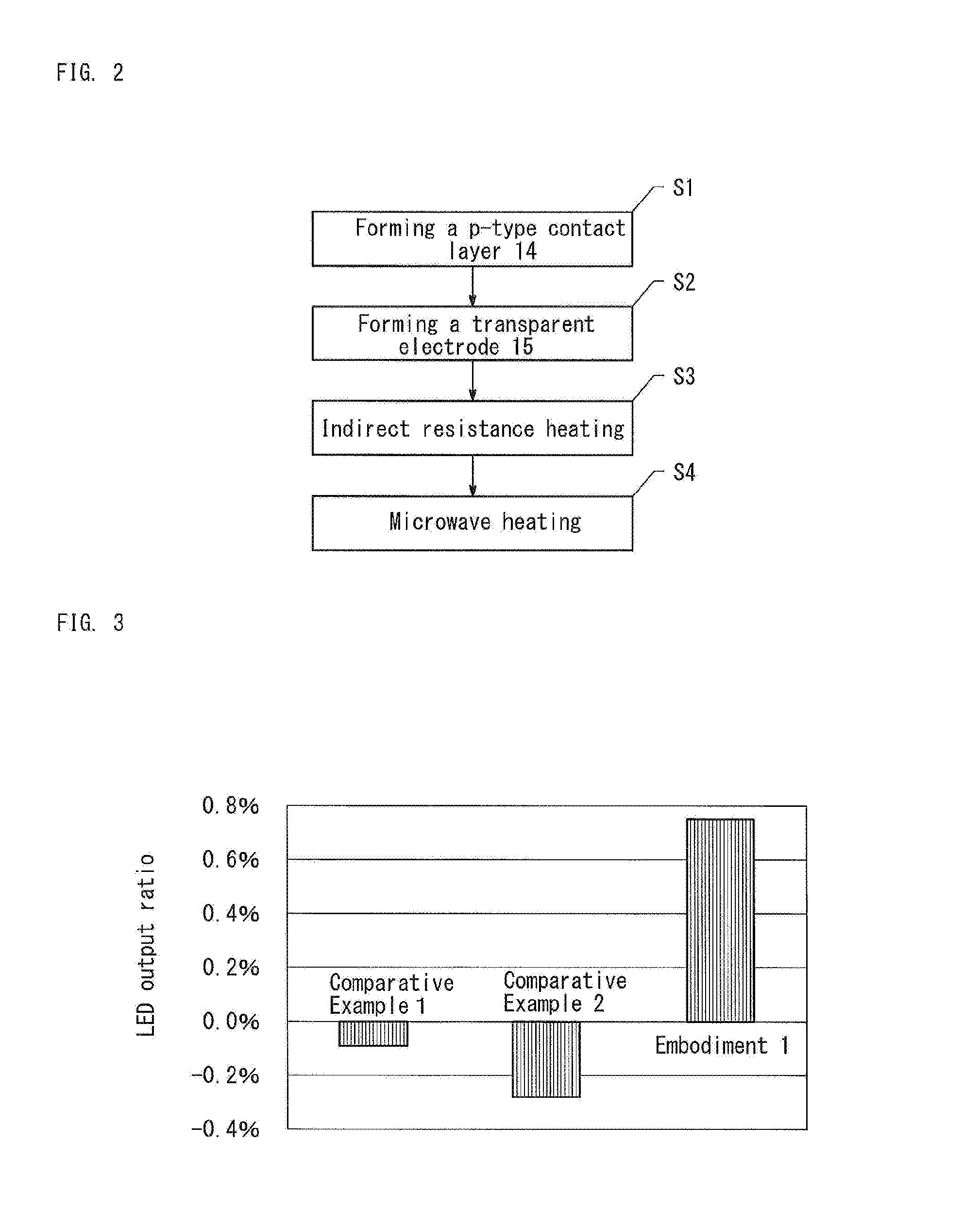Method for producing a semiconductor device
a technology of nitride and semiconductor layer, which is applied in the manufacture of semiconductor/solid-state devices, semiconductor devices, electrical equipment, etc., can solve the problems of insufficient crystallization of izo, and achieve the effects of reducing light absorption due to strain, improving translucency and conductivity, and reducing strain between transparent electrode and semiconductor layer
- Summary
- Abstract
- Description
- Claims
- Application Information
AI Technical Summary
Benefits of technology
Problems solved by technology
Method used
Image
Examples
embodiment 1
[0025]FIGS. 1A to 1D are sketches showing processes for forming a light-emitting device according to Embodiment 1. FIG. 2 is a flowchart showing a part (before and after the formation of transparent electrode 15) of the processes for producing a light-emitting device according to Embodiment 1. Next will be described the processes for producing the Group III nitride semiconductor light-emitting device according to Embodiment 1 with reference to FIGS. 1A to 1D, and FIG. 2.
[0026]Firstly, a sapphire substrate 10 was prepared, and thermally treated in a hydrogen atmosphere so as to remove impurities adhering to the surface. Next, an AlN buffer layer (not illustrated) was formed on the sapphire substrate 10. An n-type layer 11, a light-emitting layer 12, and a p-type cladding layer 13 were sequentially deposited through MOCVD on the buffer layer (FIG. 1A).
[0027]Each of the n-type layer 11, the light-emitting layer 12, and the p-type cladding layer 13 may have various known structures.
[002...
PUM
| Property | Measurement | Unit |
|---|---|---|
| temperature | aaaaa | aaaaa |
| temperature | aaaaa | aaaaa |
| temperature | aaaaa | aaaaa |
Abstract
Description
Claims
Application Information
 Login to View More
Login to View More - R&D
- Intellectual Property
- Life Sciences
- Materials
- Tech Scout
- Unparalleled Data Quality
- Higher Quality Content
- 60% Fewer Hallucinations
Browse by: Latest US Patents, China's latest patents, Technical Efficacy Thesaurus, Application Domain, Technology Topic, Popular Technical Reports.
© 2025 PatSnap. All rights reserved.Legal|Privacy policy|Modern Slavery Act Transparency Statement|Sitemap|About US| Contact US: help@patsnap.com



